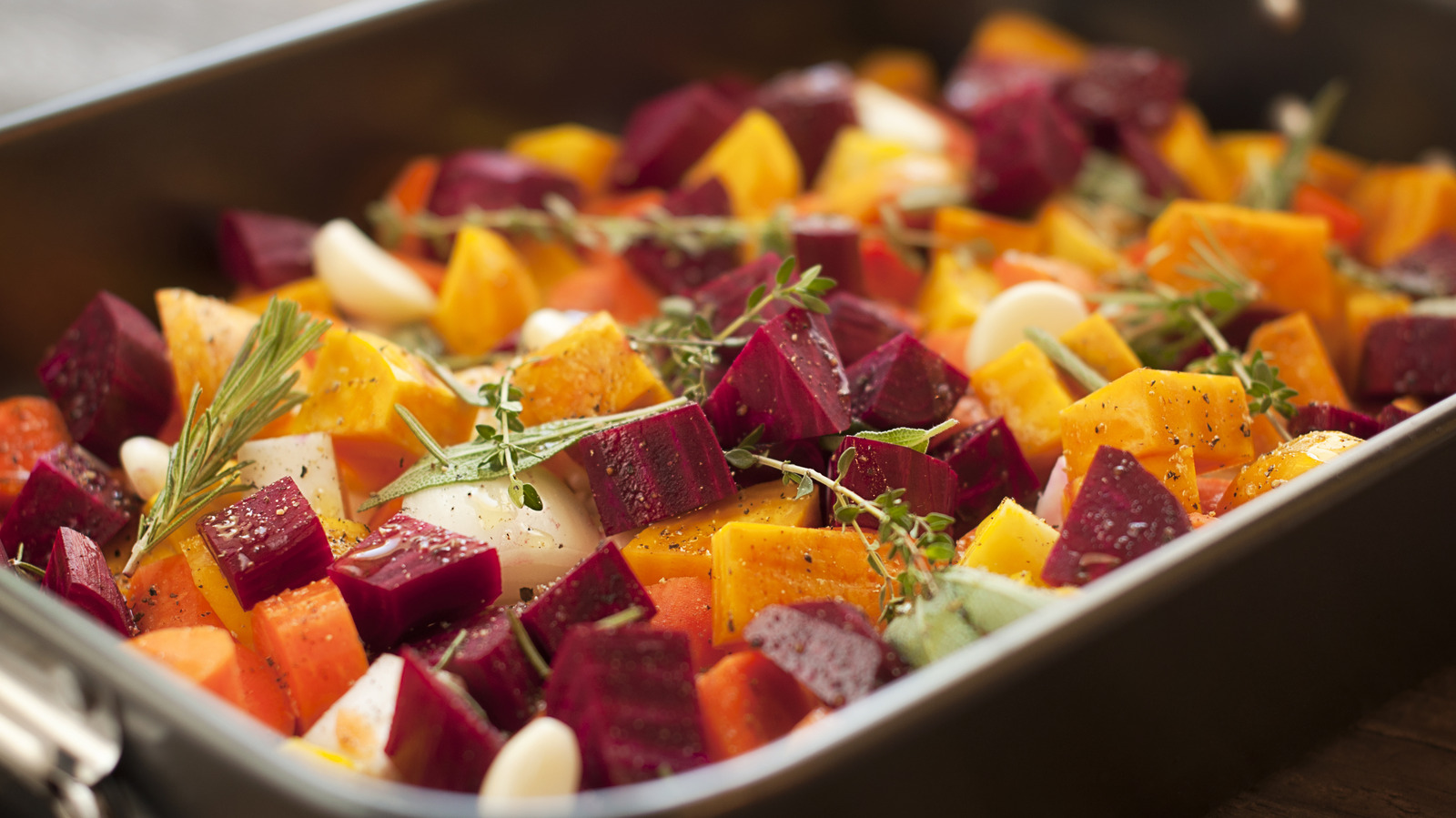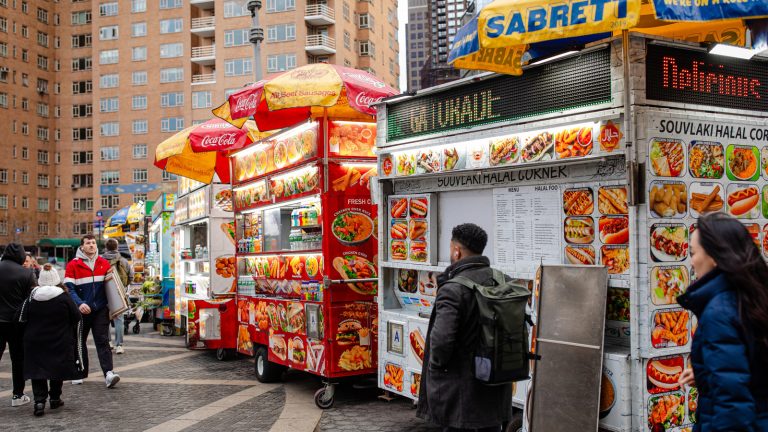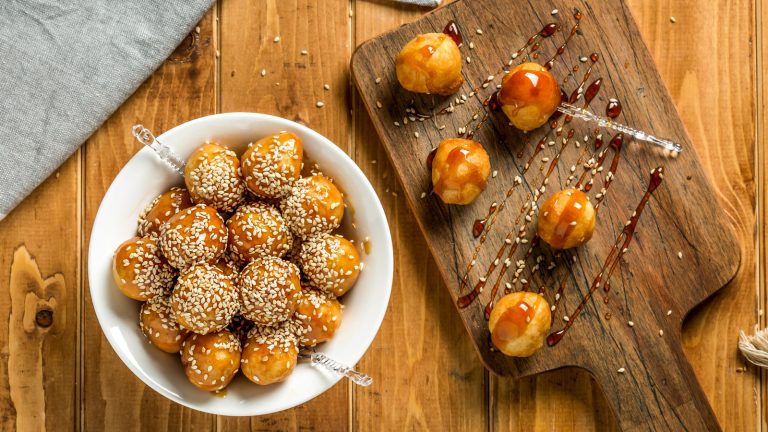We may receive a commission on purchases made from links.
If you’ve ever prepared roasted vegetables and ended up with something a little sad and soggy, there are a number of mistakes you might be making, and it’s very possible your pan might be the problem. Despite the name, roasting pans aren’t great at roasting everything — especially not vegetables. These deep-sided metal trays are designed for big hunks of meat, like turkeys or roasts, not for getting your carrots crispy or your broccoli browned. The high walls that help collect flavorful juices from meat are the same ones that trap steam when you’re roasting veggies. And that steam is the enemy of caramelization.
Vegetables roast best when they have direct contact with hot air and enough space to breathe. But when the sides of the pan are tall and the veggies are packed in, moisture gets trapped, and the dry heat of the oven becomes a humid sauna. Instead of crisp, golden edges on your balsamic roasted Brussels sprouts, you get limp asparagus and pale potatoes. And while they may still taste fine, they’re missing that deep, roasted flavor you were probably aiming for.
That’s because steam interferes with the Maillard reaction, the essential chemical process that creates browning and serves as one of many ways to add more flavor to roasted vegetables. Without enough dry heat, the reaction between proteins and sugars — responsible for those craveable nutty, toasted notes — can’t happen properly. Here’s a deeper look at how the Maillard reaction actually works. A roasting pan simply traps too much moisture to make it possible.
Use a sheet pan for crispier, browner, better vegetables
The best way to guarantee crisp, browned, perfectly-roasted vegetables is to ditch the roasting pan and grab a standard sheet pan. Specifically, a shallow-rimmed baking sheet — something such as a half-sheet pan (like this aluminum two-pan set by Nordic Ware) — is the go-to tool for home chefs who care about texture. Its low sides let hot air circulate freely, so instead of steaming, your vegetables roast evenly and develop those dark, toasty spots that make them taste like a restaurant side dish (the kind you actually enjoy, not the lackluster options you should never order at chains) instead of an afterthought.
You’ll also want to avoid overcrowding. As tempting as it is to cram everything on one pan, too many vegetables close together will still steam. Give them room. Ideally, you should spread them in one flat layer with a bit of space between each piece. And don’t skimp on the heat. Roasting works best at around 425 degrees Fahrenheit, especially for root vegetables or anything that can handle a little char. A hot oven, a low-sided pan, and a little oil are all you need to make roasted veggies the highlight of the meal.






